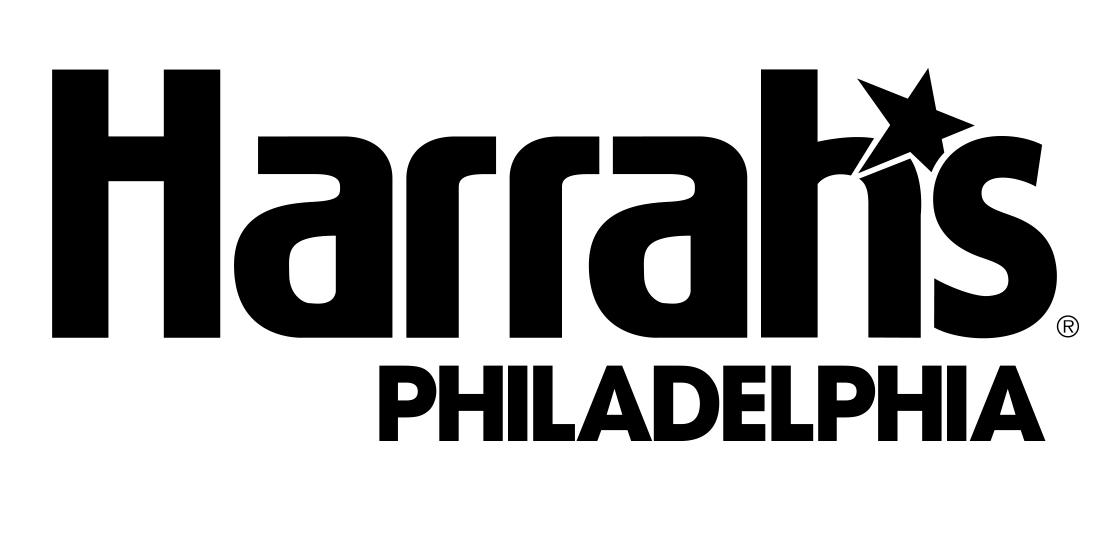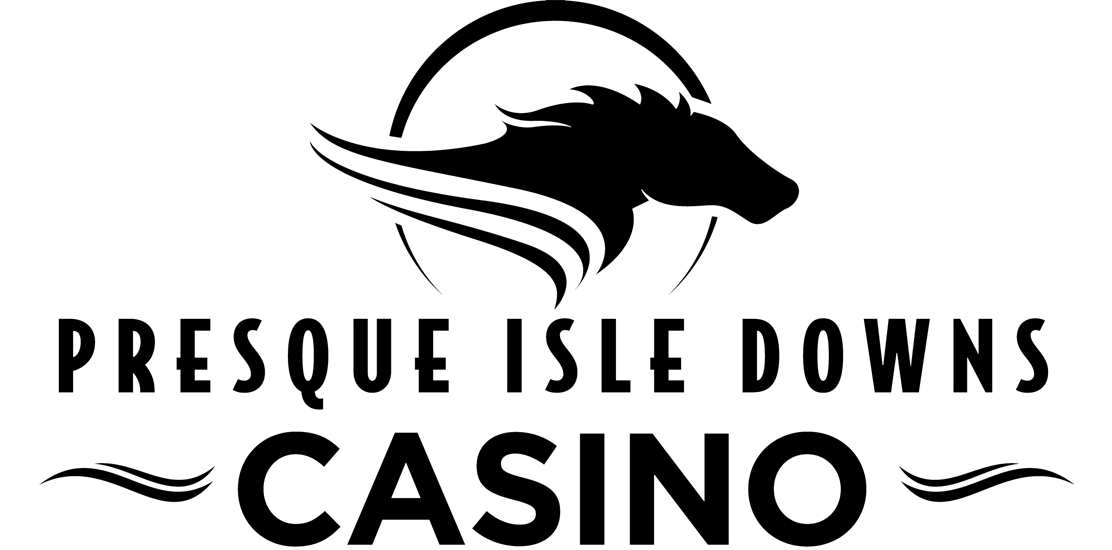In a typical year, 1,600 Pennsylvania-breds compete on the racetrack for average earnings of $27,600. Of the 50,000+ who have raced across the globe since 1985, only an elite group of 31 horses have broken the seven figure mark in earnings. Over the course of summer 2020, the Pennsylvania Horse Racing Association will be chronicling a ten-part series featuring the select group of Pennsylvania-breds who reached the unique and rare accomplishment of $1,000,000 in racetrack earnings. Join us to celebrate and remember some of the greatest racehorses the Keystone State has produced.
Lucarno: To England’s Highest Heights
While Augustin Stable has campaigned numerous stakes caliber flat and steeplechase racehorses across the United States for decades, George Strawbridge has also dedicated a string of racing stock to exclusively campaign in Europe. From his Conshohocken based farm, Strawbridge has bred a record five Pennsylvania-bred millionaires, a title he shares alongside Betty Moran’s Brushwood Stable. The most recent to retire was Smart Bid, highlighted in Part 1 of this series, and before him was Lucarno.
Lucarno’s second dam, Be Exclusive, was bred in Ireland and a Group 3 winner in France before being exported to the United States and campaigned with moderate stakes success for Augustin Stable. For her third foal, Be Exclusive delivered a filly by English juvenile champion Diesis in Pennsylvania. Named Vignette, Strawbridge initially sent her to be campaigned in England, but little success saw her returned to the United States where she eventually became a stakes winning turf sprinter. Vignette was bred to Dynaformer for her third foal, a stallion notorious for the stamina he often passed along to his offspring. On February 10th, 2004, Lucarno was foaled in Pennsylvania.
Like his mother, Lucarno was sent to England to start his racing career, and he was turned over to the care of legendary trainer John Gosden. A slow developing colt, Lucarno did not start as a 2-year-old and finally made it to the races in April of his 3-year-old season. Debuting at Newbury, and discounted at monstrous odds of 50-1, Lucarno outran the toteboard to finish second of sixteen. It was a promising debut for a horse given little chance, and Lucarno returned in another maiden race sixteen days after his debut. Trying the all weather surface at Kempton on May 7th, 2007, the colt was much more respected at the betting windows as the 1-2 odds on favorite when he blew the field of fourteen away by an easy 7 lengths.
Lucarno made his first stakes foray later that month in the Fairway Stakes at Newmarket. Relishing the added distance of the 1 ¼ mile contest, the colt trounced his competitors by 3 ½ lengths while easing up at the wire. Following his dominating victory, Strawbridge and Gosden made the decision to send their charge to another little stakes race only one week after his Fairway success…the Derby.

The middle fixture of the British Triple Crown, the G1 Epsom Derby stands as the richest race in Britian and most prestigious of the country’s five classic races. It’s the “original” Derby and has been run consecutively for 240 years. Only a mere six weeks after Lucarno’s inauspicious debut at 50-1, he found himself in the starting gate of one of Europe’s greatest and most historic races.
He didn’t win, but Lucarno put forth a valiant effort. While race favorite Authorized stormed to a 5 length victory, Lucarno crossed the line 7 ½ lengths back in a photo for third. He lost the bob by a head, finishing fourth of seventeen. Not bad for a fourth career start.
With Royal Ascot looming two weeks following the Derby, Lucarno made his next start in the Group 2 King Edward VII Stakes. Sent off as the 5-2 favorite in the 1 ½ mile event, the colt stayed within striking range but was ultimately unable to run down the frontrunning Boscobell, who won by a length. Facing older horses for the first time in the Group 2 Princess of Wales’s Stakes three weeks later, the younger Lucarno could not quite conquer his older peers, and he finished in a three-way photo for second place, unluckily ending up fourth.
Having run six times in twelve weeks, Lucarno was given a breather with a new target on the radar: the St. Leger. Contested annually in September, the Group 1 St. Leger Stakes serves as the third and longest leg of England’s Triple Crown. Run at approximately 1-13/16th miles, or 14.5 furlongs, and being much later in the calendar compared to the other legs of the Triple Crown has essentially ostracized the St. Leger from the first two legs. Instead of fielding contenders from previous legs, it often finds itself with a field of young colts hoping to find success at marathon-type distances. Although competing well at 1 ½ mile distances all season, Gosden was still wary on whether the Dynaformer colt was capable of staying the distance in one of England’s most grueling races.
Returning off a six-week layoff, Lucarno reappeared in the 1 ½ mile Group 2 Great Voltigeur Stakes at York as a prep race for a possible St. Leger start. European supertrainer Aiden O’Brien’s Yellowstone was made race favorite despite having already been beaten by Lucarno twice. O’Brien was wielding a four-strong attack with Mahler, Acapulco, and Macarthur also representing him in the Great Voltigeur. It made no matter to Lucarno, who took the lead from Mahler approaching the final furlong and held off the late surge of Yellowstone to win by a length. Gosden was still not entirely convinced of his colt’s staying ability, but he eventually caved and submitted a last minute St. Leger entry for Lucarno.
Staged twenty-five days after the Great Voltigeur, the St. Leger attracted a field of ten that included four exceptionally stamind-bred charges for Aiden O’Brien: the returning trio of Mahler, Macarthur, and Acalpulco, as well as eventual race favorite, Honolulu. Lucarno was a lukewarm 7-2 second choice behind 8-5 Honolulu, who was entering off of a close runner-up effort in a 14 furlong event.
Lucarno settled comfortably into seventh place in the early going and remained there for the majority of the race as Mahler set a swift tempo for the distance. Jimmy Fortune, aboard Lucarno, waited patiently to make his move. Approaching the final three furlongs, the majority of the field was under heavy urging with Mahler pushed into a drive on the lead and Honolulu beginning to creep up Lucarno’s flank. But Jimmy Fortune still sat chilly.
Finally, as they approached the final quarter, Fortune roused Lucarno with a simple flick of his wrists. The response was instant. With Honolulu hot on his tail, Strawbridge’s colt swallowed up horses as if they were standing still, catapulting from seventh to second in a sixteenth of a mile. Lucarno collared an unsuspecting Mahler approaching the final furlong and soared under the wire a length in front. Honolulu simply could not keep up with Lucarno’s turn of foot and settled for third, another ¾ length behind Mahler.
Although so worried about Lucarno’s ability to stay, John Gosden was rewarded with the second St. Leger victory of his training career. It marked the first classic victory for rider Jimmy Fortune and still remains the only British classic victory for George Strawbridge’s Augustin Stable. The St. Leger was Lucarno’s final start of the year, with John Gosden saying he would be “a lovely horse next year”. He was named 2007 Champion Pennsylvania-bred Grass Horse.
Unfortunately, the hopes for Lucarno as an older horse did not pan out as expected. He struggled to regain his three-year-old form, finishing badly beaten in his first two starts of the year. He did offer one reminder of his former brilliance in the Group 2 Princess of Wales’s Stakes when he flashed away from defending champion Papal Bull to win by 1 ¼ lengths, but it would ultimately be the final win of his career, and it was the only race he hit the board in all year. Finally, following three subsequent off the board finishes, Lucarno was retired after his October 8th, 2008 run in the Canadian International, his only foray on North American soil.
In fourteen career starts, Lucarno won five times and finished second twice for total earnings of $1,146,233. He won four stakes races and reached England’s highest heights with a victory in a British classic race.
Initially entering stud in 2009 at Wood Farm Stud in England, Lucarno relocated to three different stud farms before finally settling at Longford House Stud in Ireland for the 2018 season. On March 10th, 2018, Lucarno unexpectedly suffered a heart attack and passed away. He was fourteen-years-old.
While he struggled to find traction as a stallion, Lucarno sired many runners who found success in long-distance hurdle races. His biggest achievement as a sire came posthumously when 7-year-old mare Dame de Compagnie surged to victory in the 2020 edition of the Group 3 Coral Cup Hurdle at Cheltenham, becoming the first and only group stakes winner for her sire.
High Yield: Down for a Dogfight
For Betty Moran’s Brushwood Stable, buying and selling high priced horses became a normal occurrence. Building a reputation as one of the greatest names in Pennsylvania racing and breeding doesn’t come easy, but Brushwood has certainly cemented its legacy by holding the record for breeding the most Pennsylvania-bred millionaires, a title shared alongside the above-mentioned George Strawbridge. So far, our series has covered Master Command, one of the five Penn-bred millionaires bred by Brushwood. But before all of the rest came High Yield.
Mrs. Moran’s method of buying expensive broodmares for her Malvern-based Brushwood Stable and then selling the resulting offspring at auction has proven to be both effective and profitable. While attending the 1995 Keeneland November Sale, she happened upon a stakes winning daughter of champion juvenile Forty Niner in foal to Holy Bull. The mare was a half-sister to the 1986 English Champion Two-Year-Old Filly Forest Flower, who Betty had acquired as a broodmare a couple years earlier. She took home the mare, named Scoop the Gold, on a $475,000 winning bid.
While Scoop the Gold’s first foal didn’t turn many heads, Mrs. Moran sent the mare to Pennsylvania-bred supersire Storm Cat. On March 30th, 1997, she foaled a chestnut colt at Brushwood Stable, and he would certainly end up paying back his mother’s purchase price. Offered at the 1998 Keeneland July Yearling Sale, Scoop the Gold’s colt hammered at $1,050,000 for Demi O’Byrne.
O’Byrne served as bloodstock agent for John Magnier and Michael Tabor, partners in the dominant globetrotting breeding and racing operation Coolmore. Three years prior, Irish native Tabor had watched his first American-owned racehorse storm to victory in the Kentucky Derby and Belmont Stakes. Thunder Gulch was named 1995 Champion Three-Year-Old Male, and John Magnier purchased half of the colt for stud duties at Ashford Stud, the Kentucky branch of Coolmore. Tabor soon after joined the Coolmore partnership, and the rest was history.
The colt was named High Yield, sent to California to be turned over to the care of Hall of Fame trainer D. Wayne Lukas, and soon began attracting attention. Robert and Beverly Lewis, who had campaigned Silver Charm to Kentucky Derby, Preakness, and Dubai World Cup victories in 1997 and ‘98, bought into the colt to become majority partners alongside Magnier and Tabor before he made his first start on the racetrack.
High Yield debuted in July of his two-year-old season at Hollywood Park, finishing a respectable second. Instead of attempting another maiden race, the colt entered the G3 Hollywood Juvenile Championship where he picked up blacktype status while finishing third. With Lukas shifting gears to Saratoga, High Yield shipped east, and on August 7th, 1999, he crushed a maiden field by a widening 8 ¾ lengths. It would be the last non-stakes race of his career.
With such a dominating maiden victory, High Yield made his next start as the favorite in the G1 Hopeful Stakes, the premier 2yo event at Saratoga. After settling into fourth early on, High Yield made a three-wide move to challenge for the lead approaching the top of the stretch. He quickly took control and rolled to a 5 length score to become a Grade 1 winner in his fourth career start.
Having quickly established himself as one of the top horses of his division, High Yield marched on at the highest level with his next start in the G1 Champagne Stakes at Belmont Park, but he eventually faded to third after contesting the early pace. Regardless, the decision was made to push on to the Breeders’ Cup World Championships.
Held at Gulfstream Park, the Breeders’ Cup Juvenile attracted a full field of 14 young horses in a rather wide open division. High Yield ended up the 6-1 fourth choice off of his Champagne effort. Sitting a few lengths off a hot pace in the early going, High Yield put in a bid around the turn to draw even with Chief Seattle turning for home. With the two vying nose-to-nose down the stretch neither of them caught wind of Anees, a 30-1 longshot making a sweeping move from last place, who soared past the dueling pair and pulled away to a 2 ½ length upset. High Yield never quite got past Chief Seattle and settled for third.
High Yield was installed the 7-5 favorite for the G2 Kentucky Jockey Club, but a poor start left him unable to recover and he finished off the board for the first time in his career. Lukas decided his charge still had one race left in him for the year and returned west for the G1 Hollywood Futurity at Hollywood Park. Kentucky Jockey Club winner Captain Steve was favored in the short field of six, and although High Yield initially grabbed the lead around the turn, Captain Steve assumed command shortly after and pulled away to win by 4 lengths. High Yield finished second with another 11 lengths back to the third place finisher.
With the change of the calendar brought the start of a new century, and High Yield began his three-year-old campaign in the Grade 2 Santa Catalina at Santa Anita Park. Joining him in the six horse field was Captain Steve and Irish import The Deputy, who was making his first start on dirt. High Yield and The Deputy were inseparable from the start, dueling head-to-head on the lead the entire way around, but The Deputy began inching away inside the final sixteenth and eventually scored by a length.
Heading east again, High Yield settled in at Gulfstream Park for the G1 Fountain of Youth Stakes. Installed the 2-1 favorite, the colt went to the early lead and set a swift tempo of 23.25, 46.01, and 1:09.88 before Hal’s Hope ranged up alongside turning for home. Hal’s Hope put forth a stern effort, but he never quite got past High Yield who eventually shook away to score by 3 ¼ lengths.
Returning the following month in the Grade 1 Florida Derby, High Yield was an even money favorite for his rematch with Hal’s Hope. This time Hal’s Hope took it to him from the start, taking the lead immediately out of the gate and holding a narrow lead over High Yield. Hal’s Hope tried to shake away around the turn, but High Yield quickly shifted outside of him and reengaged. The pair turned for home with 7 lengths on the rest of the field, dueling nose-to-nose for the duration of the stretch, but the nose that hit the wire first was Hal’s Hope’s as he officially won by a head.
Hoping to secure his spot in the Kentucky Derby, High Yield made his final prep in the Grade 1 Blue Grass Stakes at Keeneland. Hal’s Hope followed, and the rubber match was set. Despite his loss to Hal’s Hope, High Yield still broke from the gate as the post-time favorite. He made sure to secure the early lead with his familiar foe breathing down his neck through testing quarters of 23.36, 46.00, and 1:09.97. Hal’s Hope could not keep up and suddenly gave way around the turn, spiraling backwards through the field as More Than Ready took up the chase after High Yield. More Than Ready drew even with High Yield as the field turned for home, the pair so closely locked in battle that they brushed repeatedly, but High Yield looked his rival in the eye and refused to let him pass, stubbornly crossing the wire a head in front.
His third Grade 1 victory in the Blue Grass made High Yield a millionaire, but it would prove to be his final victory. Although he entered the Kentucky Derby as one of the favorites off of his impressive prep season, he never threatened and finished a disappointing fifteenth. A rebound attempt was made in the Preakness, but High Yield faltered after prompting the early pace and finished towards the back of the field. It would end up being the final race of his career. On June 12th, 2000, D. Wayne Lukas announced that High Yield was retired after fracturing a sesamoid while training at Churchill Downs.
Although his racing career ended with a fizzle, High Yield still proved his heart and tenacity in each of his Grade 1 scores. He retired with four wins, four seconds, and three thirds in fourteen starts for earnings of $1,170,196. He secured three Grade 1 victories in the Hopeful, Fountain of Youth, and Blue Grass Stakes against some of the best his division had to offer.
High Yield retired to stud duties at John Magnier’s Ashford Stud in Versailles, Kentucky for $35,000 the following season. He routinely shuttled to Australia and Argentina for the southern hemisphere breeding seasons. Although initially supposed to move to Hill n Dale Farm for the 2006 season, High Yield eventually ended up at Haras de la Haie Nueve in France. On December 5th, 2007, the stallion suffered a heart attack and passed away. He was ten-years-old.
High Yield was best represented by 2007 Canadian Champion Three-Year-Old Colt Alezzandro, Singaporean group stakes winner The Hornet, Group 3 French hurdle winner Libaute, and Grade 2 Dixie Stakes victor Pays to Dream.
Arson Squad: The Gallant Gelding
When nineteen-year-old broodmare Majestic Fire stepped into the sales ring at the 2002 Keeneland November Sale, she was carrying her twelfth and final foal. The highest racing class achieved from her eleven previous progeny was a third place finish in a $25,000 listed stakes, and there was no reason to believe her final foal would be any different. She hammered for a mere $3,500 and was purchased by Jewel Stable.
On April 2nd, 2003, Majestic Fire delivered her final foal in Pennsylvania, a colt by the first-year stallion Brahms. Bred in the name of E&D Enterprises, the colt was entered in the 2003 Fasig-Tipton November Sale as a weanling where he hammered for $20,000 to Clarkland Farm. Clarkland eventually sold Majestic Fire’s colt for $100,000 at the 2004 Fasig-Tipton July Sale. The six-figure ticket was signed by Jay Em Ess Stable.
Samatha Siegel’s Jay Em Ess Stable was created in 2002 in an effort to consolidate her family’s racing operation. For decades, racing had been a family affair for the Siegel’s. When Samatha’s mother, Jan, grew ill and passed away in 2002, Samatha and her father, Mace, continued racing and breeding horses under the new name Jay Em Ess.
Siegel named her new colt Arson Squad and sent him west to her California contingent that was manned by Bruce Headley. Arson Squad proved to be a handful and was gelded before he made his first appearance on the racetrack. Unraced as a two-year-old, he made his career debut while finishing third during January of this three-year-old season.
On February 11th, 2006, Arson Squad made his second appearance on the racetrack a winning one while rolling to an easy, wire-to-wire 4 ½ length victory at Santa Anita Park. He returned two months later to become a stakes winner in his third start when landing the San Pedro Stakes in last-to-first fashion, rolling by 4-5 favorite Da Stoops to win by 1 ¾ lengths.
Arson Squad tallied two third-place finishes in the Grade 2 Lazaro Barrera Memorial and Grade 3 Affirmed Handicap, losing both by a 1 ½ length margin, before entering the Grade 2 Swaps Stakes. Facing off against Affirmed Handicap top-two Point Determined and A. P. Warrior, Arson Squad turned the tables when closing from last to secure the first graded victory of his career by a length.
An attempt on the grass resulted in a respectable fourth place finish, but Arson Squad returned to the main track with an easy allowance victory before ending his year with an off-the-board effort in a loaded Grade 1 Malibu Stakes.
Arson Squad started his year with a fourth place finish in the Grade 2 San Fernando Stakes, beaten 1 ½ lengths. He quickly rebounded with another last-to-first run to win the Grade 2 Strub Stakes by 1 ¼ lengths, defeating all three horses who finished ahead of him in the San Fernando.
Unfortunately for Arson Squad, all of California’s major racetracks converted their dirt surfaces to synthetic for the summer racing season. The gelding never grew accustomed to the new track surface, and he was plagued by a streak of off-the-board finishes that carried him into his five-year-old year. His best finish ended up being a fourth place in the Grade 1 Pacific Classic.
After seven consecutive off-the-board efforts on synthetic tracks, Samantha Siegel decided it was time for a change. She moved her gelding to her eastern contingent so that he could continue his career on dirt tracks, and he settled into the New York barn of Rick Dutrow. It would be his first time making a start outside of California, and the change was immediate.
Arson Squad made his first start out east in the Grade 2 Meadowlands Cup in New Jersey. 20 months removed from his last win in the Strub, the five-year-old gelding rallied from 11 lengths back to win by a widening 2 ½ lengths on his return to dirt.
He finished his season finishing fourth, beaten a length, in the G1 Cigar Mile before starting 2009 with another fourth in the G1 Donn Handicap. He traveled overseas for the world’s richest race, the G1 Dubai World Cup, with little success before returning to the states and again finishing a close fourth, beaten 1 ¼ lengths, in the G1 Stephen Foster. It would end up being the final start of his abbreviated season.
Returning at age seven in 2010, Arson Squad began his year with a third-place effort in allowance company before finishing second in the Challenger Stakes at Tampa Bay. Jumping back into graded stakes, Arson Squad was made the 9-5 favorite in the G3 Skip Away Stakes. Sticking a bit closer to the lead than usual, he closed in to take the lead turning for home and drew away to a 3 ¾ length victory. The $75,000 winner’s purse boosted Arson Squad past the seven-figure mark in earnings, and he became racing’s newest millionaire.
Making his next start in the G3 Alysheba Stakes on the Kentucky Oaks undercard, the gelding replicated his Skip Away run, taking over the lead turning for home and driving to a 2 ¼ length score. It was the fifth graded victory of his career and the first time he won graded stakes back to back.
Following two subsequent off-the-board finishes, Arson Squad returned to the winner’s circle with a win in the Mighty Forum Stakes at Belmont Park before ending his season with a third-place finish, losing by a short neck in the Grade 3 Queens County Stakes.
Arson Squad returned to the races at eight-years-old, but with age finally starting to take its toll the best he could muster were three additional stakes placings in the Evening Attire, Irish Tower, and Queens County Stakes. Although the plan was to return Arson Squad for a 2012 campaign at age nine, the Queens County, run on December 10th, 2011, ended up being the final race of his career. On New Year’s Eve the gelding suffered a career ending injury during a workout at Gulfstream Park.
Transported to Rood & Riddle Equine Hospital in Lexington, Kentucky, Arson Squad underwent a successful surgery to repair his leg. Two and a half months later, he was released from the hospital and began the next chapter of his life. Samantha Siegel decided to entrust her beloved gelding to Old Friends Farm, a thoroughbred retirement facility in Georgetown, Kentucky.
Now seventeen-years-old, Arson Squad still enjoys his retirement days at Old Friends with visits from old fans and tourists. From six years on the racetrack, Arson Squad compiled nine wins, one second, and eight thirds from thirty-five career races, earning a grand total of $1,190,181. He tallied seven stakes wins, including five graded victories, at ages three, four, five, and seven. He placed in seven additional stakes and finished fourth in six others. From twenty-eight races over a dirt surface, he only finished outside of the superfecta on five occasions.











